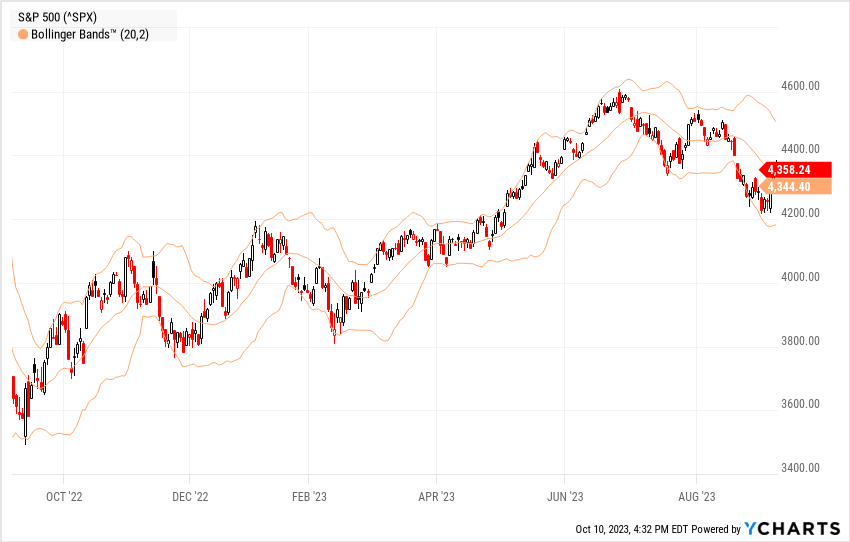I continue to believe this is one of the highest-risk investment market environments of my 37-year career. But that doesn’t mean there aren’t profit opportunities for short-term and long-term investors alike.
Because if you have a wide enough tool set at your disposal, you can navigate any market environment. ETFYourself.com was created with that mission. But the current setup for stocks and bonds is as opaque as investors will find.
Here’s a quick summary of what I see.
Keep in mind that the approach here is never about certainty, but rather with determining 2 things:
-
What’s the balance of reward potential versus risk of major loss (our ROAR Score)
-
How to construct and rotate a portfolio of ETFs that expresses what #1 concludes
STOCK MARKET: LONG-TERM VIEW
-
The S&P 500 has been in a trading range since late 2020. Maybe it doesn’t seem that way, but this chart starts on 11/24/20. That’s nearly 3 years ago. Since the index first crossed above the 3,600 level and sprinted to around 4,800, it has been waffling back and forth (that’s a technical term :-)
-
That means risk of major loss continues to be above average, but it doesn’t mean that there won’t be pockets of time where traditional stock market investing (buying ETFs that invest in large cap stocks, sectors, etc.) works well for a while.
-
The issue here is what I call a lack of sustainability. Not in the environmental sense of the word, but in the ability for stock prices en masse to move decided higher and not just “give it all back.” The latter has been going on since July of 2021, when the S&P 500 stood at the same level it does now. I’ve compared this to an NFL quarterback who scrambles around, avoiding tacklers, running about 75 yards backwards and sideways, before finally being tackled at the original line of scrimmage. Lots of movement, no progress. And remember, the S&P 500 has been one of the better market segments the past few years.
At some point, this will produce either a significant drop in the stock market that will get much more interesting for taking on stock ETF positions that are more than tactical “trades” held for weeks or months. Or, the long list of concerns shown in our MOFO (Market Outlook Factor Overview) table shown on our site will resolve themselves, and we’ll look back and say that the stock market traded “sideways” for years, but then a new bull market started.
STOCK MARKET: SHORT-TERM VIEW
In the meantime, tactical investing is the rule here, and our model portfolios and consistently low ROAR Score means that returns continue to be made via approaches other than “buy and hold” stock investing. The chart evidence, in part, is below.
In these ETFYourself.com commentaries, I’m going to strictly limit my use of fancy technical jargon. If it turns out that is something part of our audience wants, we’ll certainly arrange some live sessions around it. I’ve been charting for 43 years, and if I’ve learned anything, it is that many folks make it way to complicated!
Above, I see a market struggling to recover…again. Since the start of 2022, we’ve had more than 20 “fakeout-breakouts” as I call them. So the bar for declaring that a rally is is sustainable is high. The market needs a 10% rally to get within striking distance of that 4,800 all-time high, at which point momentum and emotion can carry it through and a new bull market can begin. That’s a very long way from here, and I don’t just mean in percentage terms. It will take more than yet another 2-5 day “pop” to overcome some of the economic and geopolitical hurdles in our midst.
The “Bollinger Bands” indicator here show a series of small rallies, flattening periods and ultimately little long-term progress. For most of the market, 2023 is still working on getting even for the losses of 2022.
At times like this, it is nice to know we follow 200 different ETFs, each potentially representing a different way to seek return without major risk. Stay tuned for this Thursday’s weekly letter, which will summarize our indicators, update the ROAR Score and keep the process moving forward. Thanks!
Related: See You Over There, Bear




